
Butterfly weed (Asclepias tuberosa)
Looking almost good enough to eat, one of my favorite perennials this time of year is Asclepias tuberosa, commonly known as butterfly weed. A tough, low-maintenance North American native, butterfly weed brings a delicious zing of orange to the early summer garden.
This easy-going member of the milkweed family (Asclepiadaceae, now included in Apocynaceae in modern classifications) requires full sun and good drainage, tolerates poor soil, heat, and drought, and is reliably hardy to at least zone 4 (zone 3 according to some references). Butterfly weed is one of the last perennials to emerge in the spring, so take care not to plant over it or damage the young shoots. Unlike some milkweeds (e.g., A. syriaca) it is well-behaved and doesn't roam, instead forming a slowly-expanding clump. It will re-seed modestly but seedlings are easy to mistake for weeds. It is easily grown from seed, and will bloom during the first year if sown early enough but plants are larger and bloom much better the second year on. It can also be propagated by root cuttings, although I've never tried this method.
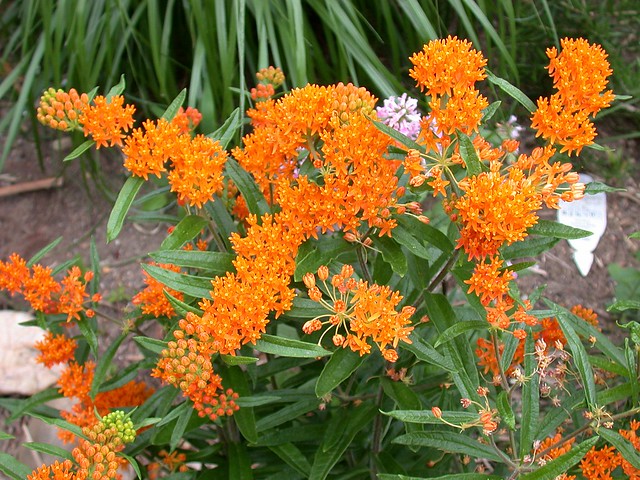
Butterfly weed is a bit more exotic-looking than most of the other native North American milkweeds and I love it for its brilliant pop of color in early summer, before many of my tropical and subtropical plants have reached their peak. It will reliably re-bloom a few weeks later if deadheaded as the first flush of bloom is finishing, and before any seed capsules have formed. The second bloom nicely complements the cannas and other tropical and subtropical plants that have grown up by then.
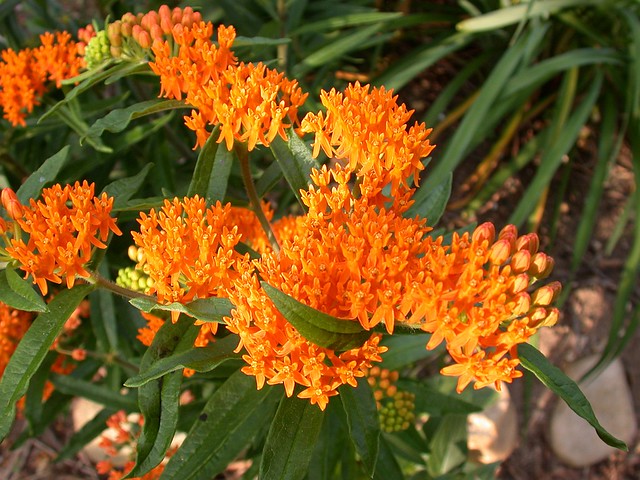
Butterfly weed glowing in the setting sun
Asclepias tuberosa was described by Linnaeus in 1753. The specific epithet "tuberosa" refers to the tuberous roots the plant produces. It differs from most other milkweeds in that the small, narrow leaves are alternate on the stem rather than opposite, nor does it produce a milky latex. But like all milkweeds (e.g., Hoya, Stapelia, Stephanotis) it produces a long, narrow capsule known botanically as a follicle that opens along one side to release flat seeds with silky parachutes that float away on the wind.
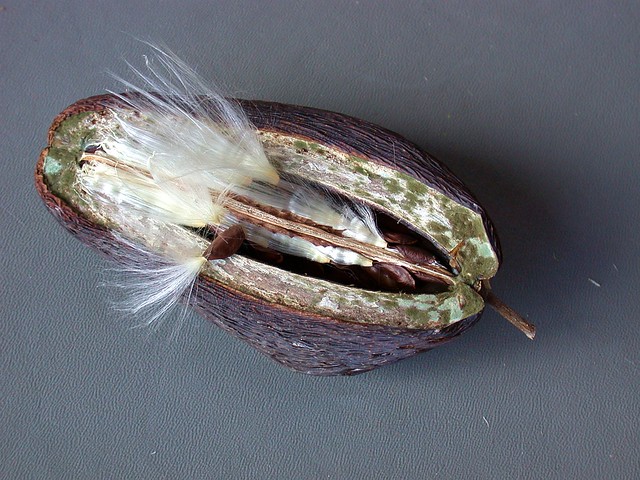
Stephanotis capsule and seeds
Woodson (1944, 1954) noted the wide range of variation and recognized 4 subspecies: A. tuberosa subsp. tuberosa, A. tuberosa subsp. rolfsii, A. tuberosa subsp. interior, and A. tuberosa subsp. terminalis. The species is typically orange in the wild, but yellow flowers can also be found. Yellow forms like 'Hello Yellow' are cultivated and a color mixture is marketed under the name "Gay Butterflies". My personal preference is for the bright orange forms. In my own garden, an interesting variant with intensely colored 2-toned flower popped up.
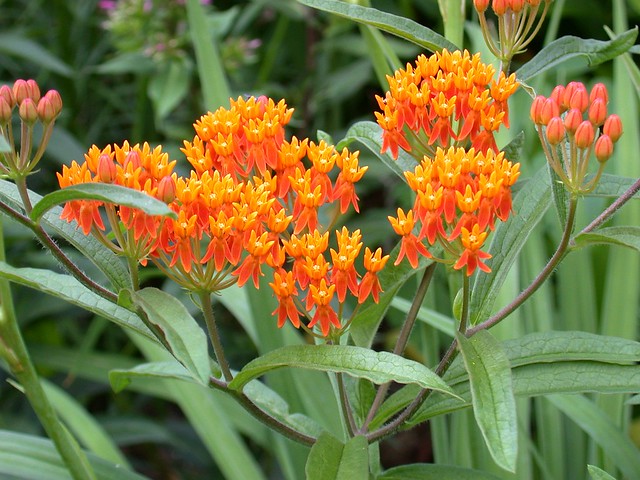
The common name of "butterfly weed" reflects its reputation for being attractive to butterflies, although in my own experience butterfly bush (Buddleja species and cultivars) is much more attractive to butterflies. It does attract monarch butterflies (Danaus plexippus), which will visit the flowers and also lay eggs on it. And aphids! Milkweeds of all kinds attract aphids but it doesn't seem to do them any harm and they don't seem to spread to other plants. Milkweed bugs (Oncopeltus fasciatus) nearly always show up, again seemingly doing no harm to the plant, although a few years ago they moved from my butterfly weed to my figs. I've never seen this happen before or since.
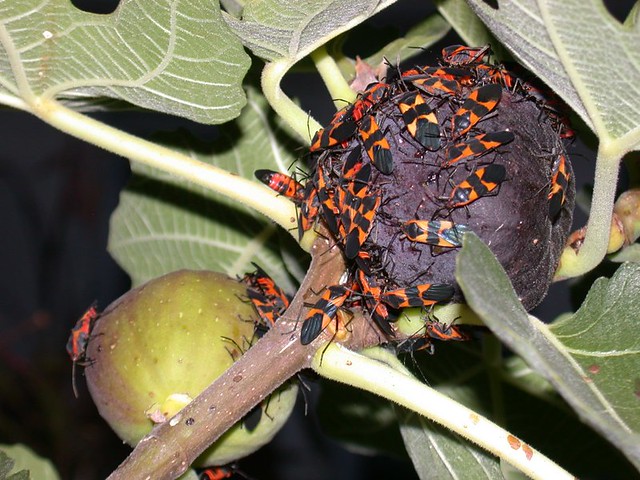
Milkweed bugs on fig
A somewhat similar species I've grown is Asclepias curassavica, commonly known as "blood flower". A more typical milkweed with opposite leaves and milky sap, this tropical perennial is generally rated as hardy to zone 9; it has never proven hardy in my own zone 7 garden, even after the mildest winters, but reseeds freely and can be treated as an annual.

Asclepias curassavica

No comments:
Post a Comment